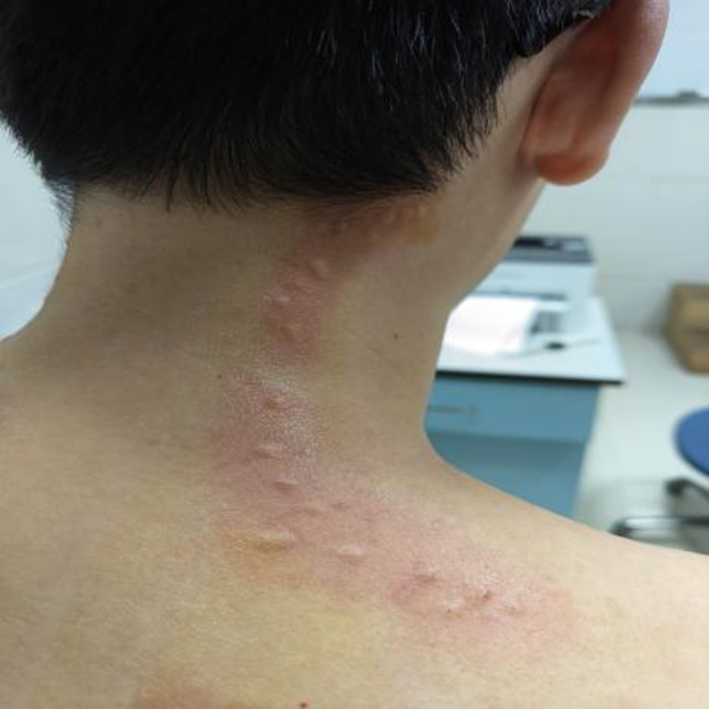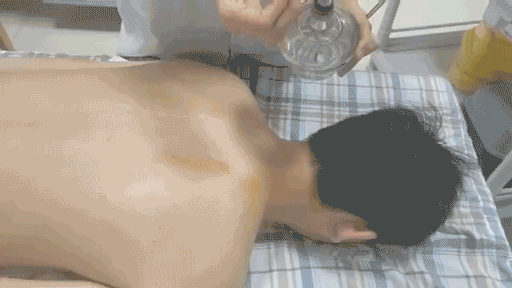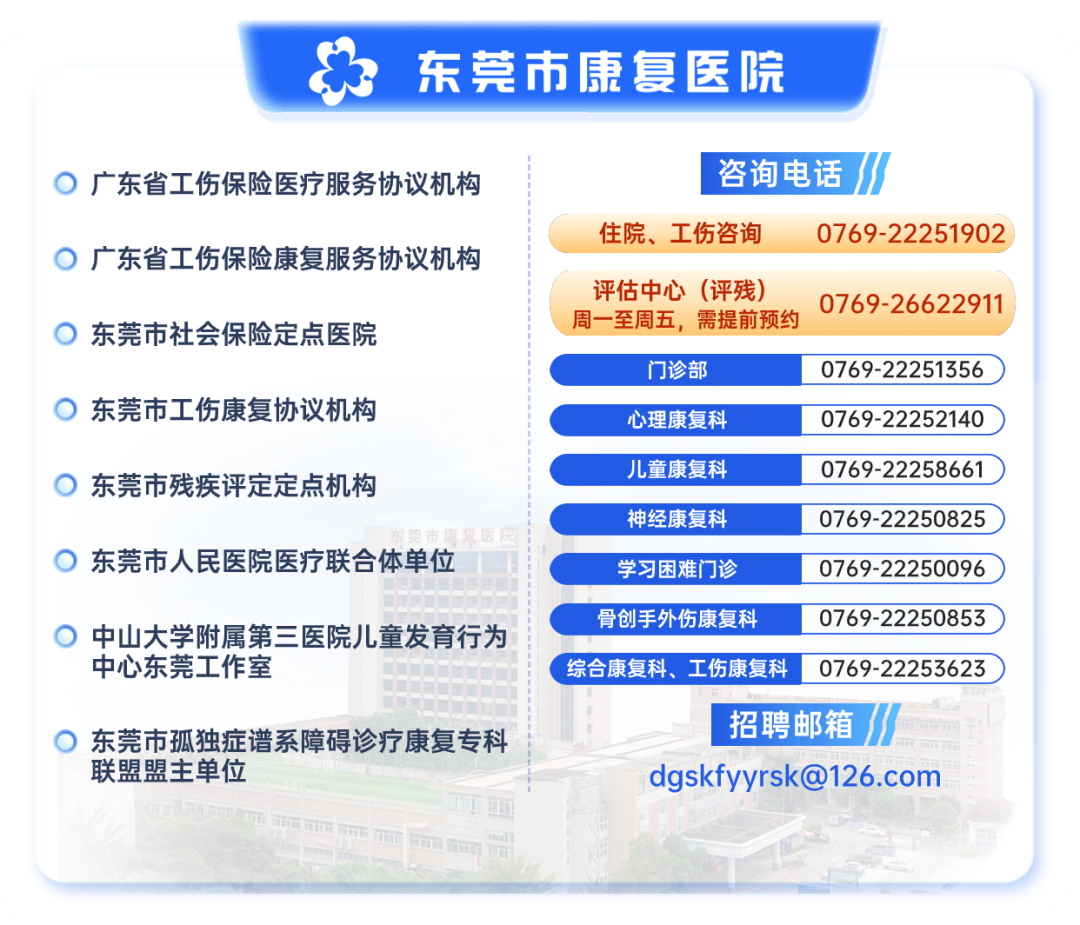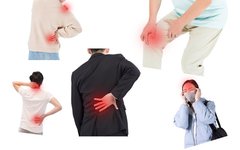
As a child,
I always looked forward to growing up,
thinking it would be a cool thing.
But after growing up,
I realized that growing up is…

Case Sharing
Little Zhao has been a loyal fan of moxibustion with fire needles for many years.
During high school, Little Zhao had already suffered from cervical spondylosis for several years, often feeling swelling in the head, lack of concentration, and severe dizziness after reading for just a few minutes, which hindered his academic performance.

After various treatments yielded no results, someone happened to introduce the efficacy of moxibustion with fire needles. He learned that there was a doctor at the rehabilitation hospital who performed this therapy, and with a mindset of trying anything, he came to the Traditional Chinese Medicine (TCM) department of the rehabilitation hospital.
At that time, Dr. Li performed moxibustion with fire needles on Little Zhao, and his pain was indeed significantly reduced. After several follow-up sessions, Little Zhao’s cervical spondylosis showed remarkable improvement, and he successfully got into his desired university.

Tips
After the needle treatment, small bumps may appear at the needle sites, and occasional itching may occur. Patients need not worry, as this is a normal reaction of the body to moxibustion with fire needles and requires no treatment; it will disappear on its own the next day.
After graduation, due to the need to handle many documents at work, Little Zhao’s cervical spondylosis flared up again. He underwent many treatments with little improvement, and finally remembered the moxibustion with fire needles he had done before and sought out Dr. Li for treatment again.
After treatment, Little Zhao felt that his cervical spondylosis had indeed improved significantly.
He said: “It’s still moxibustion with fire needles; after one session, I felt much more relaxed, and my neck was not so stiff anymore. Now I just come regularly for maintenance to reduce the occurrence of cervical spondylosis.”

What is Moxibustion with Fire Needles?
Moxibustion with fire needles is a unique acupuncture therapy that involves heating a disposable fire needle until it is red hot and quickly inserting it into specific points on the body to prevent and treat diseases. This method combines the fire needle with the traditional needle, demonstrating a clinical efficacy of “1+1>2” and represents a new form and advancement of fire needle therapy suitable for modern society.

Moxibustion with fire needles combines the advantages of fire needles’ strong heat with the minimal pain of traditional needles. Through the internal heat effect, it achieves the balance of Yin and Yang, smooths the meridians, promotes the flow of Qi and blood, and warms Yang to dispel cold, effectively targeting the disease.
Moxibustion with fire needles avoids the drawbacks of fire needles being too coarse and painful, and traditional needles being too fine and ineffective, featuring four main characteristics: minimal pain, safety, remarkable efficacy, and minimally invasive. It has a wide range of indications and can be used for various painful orthopedic diseases, internal medicine, surgery, gynecology, otolaryngology, dermatology, and health maintenance. This therapy can have immediate effects on cervical and back myofascial inflammation.
Efficacy of Moxibustion with Fire Needles
The moxibustion with fire needles therapy can dispel cold and dampness, warm and open the meridians, promote Qi and blood circulation, facilitate the movement of body fluids, strengthen the spleen and resolve dampness, and promote the flow of Qi and blood in the body.
Advantages of Moxibustion with Fire Needles
1. Analgesic and Anti-inflammatory
Treatment Mechanism: Dispel cold and dampness, smooth the meridians, promote Qi and blood circulation.
Common Diseases: Chronic arthritis, rheumatic arthritis, neck, shoulder, waist, and leg pain.
2. Clear Heat and Detoxify
Treatment Mechanism: Direct heat outward, used for heat syndromes.
Common Diseases: Herpes zoster, postherpetic neuralgia.
3. Alleviate Numbness and Dizziness
Treatment Mechanism: Direct Yang to the collaterals, assist Yang to transform Qi, thus alleviating numbness and promoting Qi and blood circulation.
Common Diseases: Numbness of limbs and dizziness caused by cervical and lumbar diseases.
4. Dissolve Nodules and Masses
Treatment Mechanism: Softening and dispersing masses, invigorating blood and resolving stasis.
Common Diseases: Ganglion cysts, acne caused by post-stroke sequelae.
TCM Department
The TCM department is a key department of Dongguan Rehabilitation Hospital, a member unit of the “Dongguan Famous Doctor Studio” of the Guangdong Provincial Traditional Medicine Association, and a member unit of the “Dongguan Acupuncture and Tuina Specialty Alliance” and “Dongguan TCM Rehabilitation Specialty Alliance.” Guided by the TCM treatment philosophy of “preventing disease before it occurs” and “treating the root cause of diseases,” we utilize professional techniques of TCM and acupuncture to prevent and treat diseases, serving patients with a spirit of dedication and sincerity. The department specializes in TCM treatment and acupuncture, inheriting the essence of traditional medicine while integrating modern medical technology, applying differential diagnosis and treatment, using TCM herbs and various techniques, needles, and modern rehabilitation therapy equipment to smooth the meridians, harmonize Yin and Yang, and achieve the goals of nourishing Qi and blood, ensuring smooth Qi and blood flow, and preventing and treating diseases.
Specialized treatment methods offered by the department include: Long’s spinal adjustment technique, Jin’s three-needle technique, awakening the brain and opening the orifices technique, acupuncture exercise therapy, round benefit needle, small needle knife, floating needle therapy, balance cupping therapy, ear acupuncture therapy, three-edged needle bloodletting therapy, fire needle therapy, acupoint injection therapy, thunder fire moxibustion, Chinese herbal fumigation therapy, and Gua Sha.
Advantageous diseases treated include: neck, shoulder, waist, and leg pain, scoliosis, sports injuries, chronic fatigue syndrome, knee arthritis, rheumatoid arthritis, peripheral facial paralysis, stroke, insomnia, constipation, abdominal distension, dysmenorrhea, headaches, and chronic cough in children.
Source: TCM Department
Editor: Wang Er
Proofreader: Qing Chen


